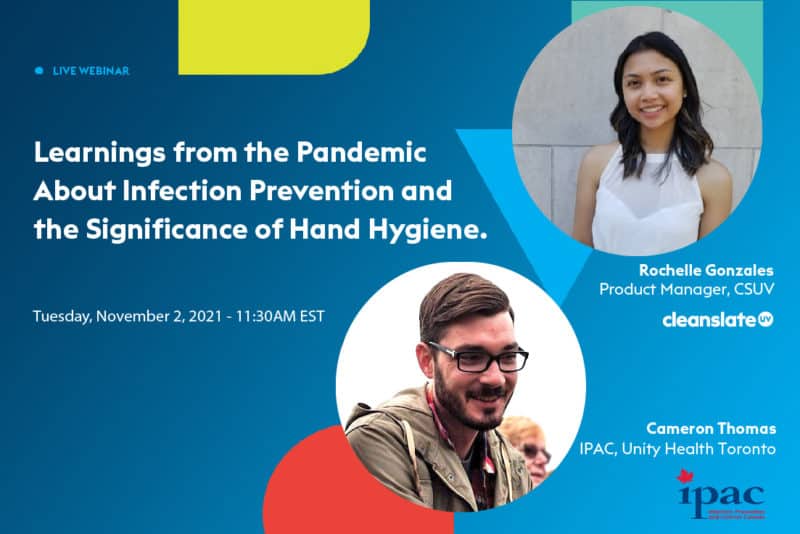The pandemic has brought about many challenges for us all. Particularly for Infection Preventionists (IP), who have encountered many unexpected challenges, on top of the everyday ones.
In our webinar with guest speaker Cameron Thomas, an IPAC specialist from Unity Health Toronto, we discussed some challenges he encountered and the lessons learned during the pandemic. Cameron gave insights on managing a hospital during a pandemic as well as solutions to continue moving forward. Keep reading for a quick recap of the webinar:
Pandemic preparedness is a must!
Being prepared for the unexpected sounds like an impossible feat. But what we learned from the pandemic is that preparation must be ongoing, even when we are not in a pandemic. The best way to stay ahead is to remain vigilant and aware.
It is important to remember that science is always evolving
A PPE Shortage Created Big Problems
Mask shortages were a significant challenge globally, as the demand increased sharply. Disinfectants also experienced a global shortage for similar reasons. These shortages have taught us how to collaborate and create new solutions.
Universal Mask Wearing
In addition to shortages, masks posed many challenges in terms of education, implementation, and prolonged usage. For the most part, using a mask caught on easily, but proper usage required extensive education. This included not touching your mask during or after use, the high risk in reusing masks, and how to wear a mask all day and properly removing it when drinking or eating.
Hand Hygiene Compliance
Hand hygiene is the best method in preventing healthcare acquired infections (HAIs). Healthcare workers are aware of the 5 moments of hand hygiene (or 4 moments for PIDAC) and it is relatively easy to increase hand hygiene performance in the short term. However, sustaining hand hygiene for the long term is a challenge.
Above all, hand hygiene compliance was, and still is one of the largest challenges in healthcare.
Given that IPAC programs can reduce HAIs by up to 30%, their value and effectiveness should be leveraged to the fullest extent. Collaboration and understanding among Health Care Workers (HCWs) and IPAC are essential in implementing all our learnings from the pandemic to post-pandemic times, as well as for other pathogens besides the COVID-19 virus.
To learn more about the pandemic learnings from an IPAC perspective, check out the full recording of the webinar with Cameron Thomas.
IPAC Webinar Recording
CleanSlate UV
CleanSlate UV was founded with a goal to increase sanitization in hospitals and reduce HAIs. As such, the deployment of CleanSlate UV devices in a facility has been shown to increase hand hygiene events. This is one step that hospitals can take to encourage hand hygiene compliance and behavioral change for the long run.
Learn More About The Science Behind UV-C
Learn how it works and what it means for your facility.


